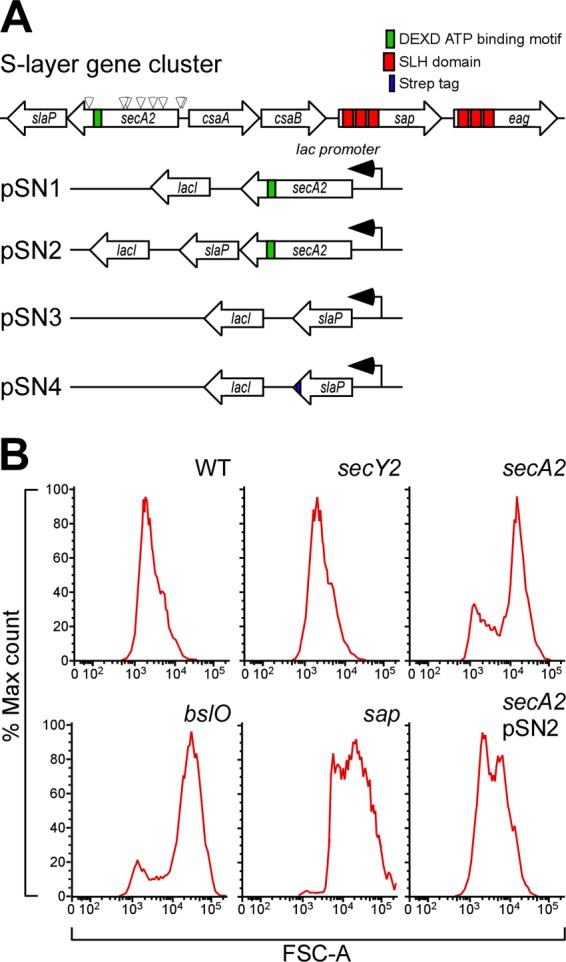Fig 1.

Isolation of Bacillus anthracis mutants that display chain length phenotypes. (A) Diagram illustrating the B. anthracis chromosomal gene cluster for the expression of S-layer proteins (sap and eag encoding signal peptide-bearing precursors with three SLH domains), the pyruvylation of the B. anthracis secondary cell wall polysaccharide (csaB), as well as the secretion of S-layer proteins, including the secA2 gene product, a predicted ATPase with a DEXD binding motif, and the slaP gene product. Arrowheads positioned above the secA2 gene identify nine different bursa aurealis insertional lesions that confer a chain length phenotype to mutant strains. Plasmids used in this study harbor wild-type secA2 (pSN1), wild-type secA2 and slaP (pSN2), wild-type slaP (pSN3), or slaP with a 3′ extension of its open reading frame specifying a Strep tag peptide for affinity chromatography of the encoded product (pSN4). All plasmids are recombinants of pJK4 and express inserted secretion gene products via the lacI-controlled, IPTG-inducible Pspac promoter. (B) The chain length of B. anthracis strain Sterne (WT) or its mutants with mutational lesions in the secY2, secA2, bslO, and sap genes was assessed by flow cytometry. B. anthracis secA2 mutants were transformed with pSN2 (harboring secA2 and slaP) to analyze the complementation of the chain length phenotype of the secA2 insertional lesion.
